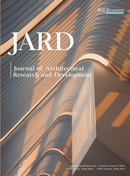Abstract
Aesthetic education not only exists in the classroom, but also in the urban living environment. The development of this environmental aesthetic education function is often accompanied by the development and change of urban landscape. Urban agricultural landscape is an organic part of modern urban landscape. It is different from machines or buildings in general urban production and life. Its local aesthetic value should be fully recognized and excavated. This is mainly reflected in the beauty of traditional agricultural skills, agricultural landscapes, and agricultural activities. At the same time, according to the different ways of interaction between people and the environment (ways of receiving aesthetic education), the development mode of vernacular aesthetic education of urban agricultural landscape can be divided into three: viewing mode, short-time contact, and long-time immersion.
References
Zhao JL, Chen YC, Mu WC, 2011, Review and Prospect of Urban Agriculture Study. Urban Development Studies,18(10): 57-63.
Jing XP, Zhou HY, 2015, Analysis on the Function and Realization of Urban Agricultural Landscape. Rural Economy and Science Technology, 26(01): 84-86.
Li RH, 2021, Art Awakens the Countryside – New Thoughts on the Construction of Rural Aesthetic Education Curriculum. Art Education Research, 2021(10): 156-157.
Long HX, 2014, The Present Situation and Significance of the Development of Local Aesthetic Education Curriculum Resources – A Case Study of Neijiang City, Sichuan Province. Journal of Liaoning Administration College, 16(05): 120-121, 123. DOI: 10.13945/j.cnki.jlac.2014.05.046
Song TT, Xie R, 2021, Analysis of Landscape Design Under Maslow’s Demand Level – Taking the Paddy Field Landscape of Shenyang Jianzhu University as an Example. Art Education Research, 2021(05): 64-65.
Yu KJ, Wang ZF, Huang GP, 2005, Discussion About the Vernacular Landscape and Their Implications to Modern Landscape Architecture. Huazhong Architecture, 2005(04): 123-126. DOI: 10.13942/j.cnki.hzjz.2005.04.039
